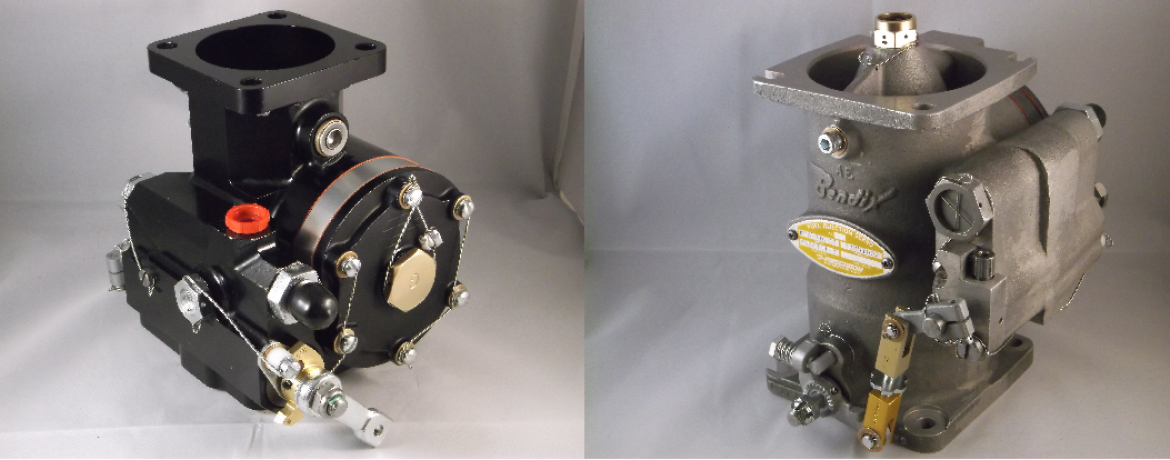All RSA type fuel injection systems are based on the principle of measuring engine air consumption by use of a venturi and the resulting airflow forces to control fuel flow to the engine. Fuel distribution to the individual cylinders is accomplished by use of a flow divider (i.e "spider") and air-bleed nozzles.
The principal of operation is as follows: air flow consumption of the engine is sensed in the injector by means of the impact tubes located in the inner venturi area. Then a known venturi size will meter a predetermined amount of air and generate a velocity pressure at the tubes that is transmitted to both sides of the air or outermost diaphragm located on the regulator section of the injector. The regulator is defined as the large diameter cover on one side of the injector and consists of the air and fuel diaphragms, connected to a ball servovalve, and controlled by a bellows and springs.
Thus, opening of the throttle valve on the injector causes an increase in engine air consumption and a resulting pressure increase in the venturi. This higher pressure is sensed by the air diaphragm via the impact tubes that results in movement of the ball servovalve in the opening or increased flow direction. The flow to the engine then increases until the pressures on both sides of the fuel diaphragm balances the regulator system to bring it into equilibrium.
This is a simple closed loop control system in which an imputed change (throttle adjustment) results in an output difference (fuel flow) that is fed back to the system (at the fuel diaphragm) to control the operation (engine speed). This scheme results in the optimum fuel-to-air ratio being maintained for correct engine performance. On fuel injectors with an external bellows, fuel or mixture is automatically controlled by the effects of altitude, and the resulting movement of the evacuated bellows that is hydraulically linked to the regulator components.
The fuel metering section on the injector consists of the inlet fuel strainer, manual mixture control valve, as well as an idle valve. The idle valve is connected to the throttle valve by means of a link which incorporates a "star wheel" for idle adjustments. The lever movements made with this adjustment are minuscule and not easily visible due to the slightly different thread pitch on both sides of the wheel. The idle speed is adjusted by the threaded screw on the stop at the throttle lever. The mixture control valve is a simple on-off assembly that is manually adjusted by its lever.
The function of a certified repair station is to calibrate the fuel injector to engine standards by adjusting and fixing the regulator with springs and threaded components while flowing the unit on an approved test bench.






